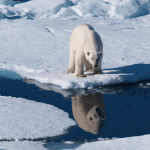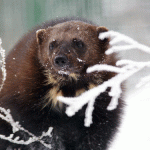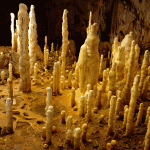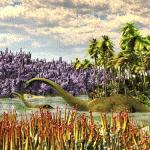
Sea otters play an important role in reducing C02 emissions. Image: Shutterstock
Hearty appetite allows kelp forests to thrive and absorb carbon dioxide.
Global warming is reaching new records, with temperatures continuing to rise and ice caps proceeding to melt at an alarming rate. Although there have been numerous actions taken by governments to counter this process, researchers from the University of California, Santa Cruz, suggest that animals may be key to reversing a principle cause of climate change.
The study published in Frontiers in Ecology and the Environment shows that predation by the humble sea otter (Enhydra lutris) keeps sea urchin populations that usually feed on seafloor vegetation in check, which in turn allows C02-absorbing kelp forests to prosper.
“It is significant because it shows that animals can have a big influence on the carbon cycle,” said professor Chris Wilmers, assistant professor of environmental studies at the University of California.
The researchers gathered 40 years worth of data on otters and kelp blooms from Vancouver Island to the western edge of Alaska’s Aleutian Islands. They used scuba divers to record the percentage cover and vertical distribution of various kelp species to estimate their biomass and recorded sea urchin densities using quadrats. They observed that where otters were prevalent, sea urchin numbers rapidly declined, and the kelp populations thrived.
“Strikingly different size structures and densities of sear urchin populations are correlated with the distribution of sea otter populations in the western Aleutian Islands,” the researchers stated in their paper. “Sea urchins are important sea otter prey, therefore sea otters probably are principal determinants to the structure and abundance of urchin populations.”
Kelp is key in sequestering CO2 from the atmosphere through the process of photosynthesis. According to the study, kelp can absorb as much as 12 times the amount of CO2 from the atmosphere when guarded by sea otter populations.
“Right now, all the climate change models and proposed methods of sequestering carbon ignore animals. But animals the world over, working in different ways to influence the carbon cycle, might actually have a large impact,” Willmers said.
Although the researchers admit that increasing the otter population will not help solve the increased levels of CO2 in the atmosphere, they stress that it is important to know the effects animals can have on the atmosphere.
“If ecologists can get a better handle on what these impacts are, there might be opportunities for win-win conservation scenarios, whereby animal species are protected or enhanced, and carbon gets sequestered,” mentioned the researcher.
Source and original press release: University of California
See also: 3 Ways Climate Change Affects Our Ocean: the importance of ocean data in mitigating climate change (by Sofar Ocean)






